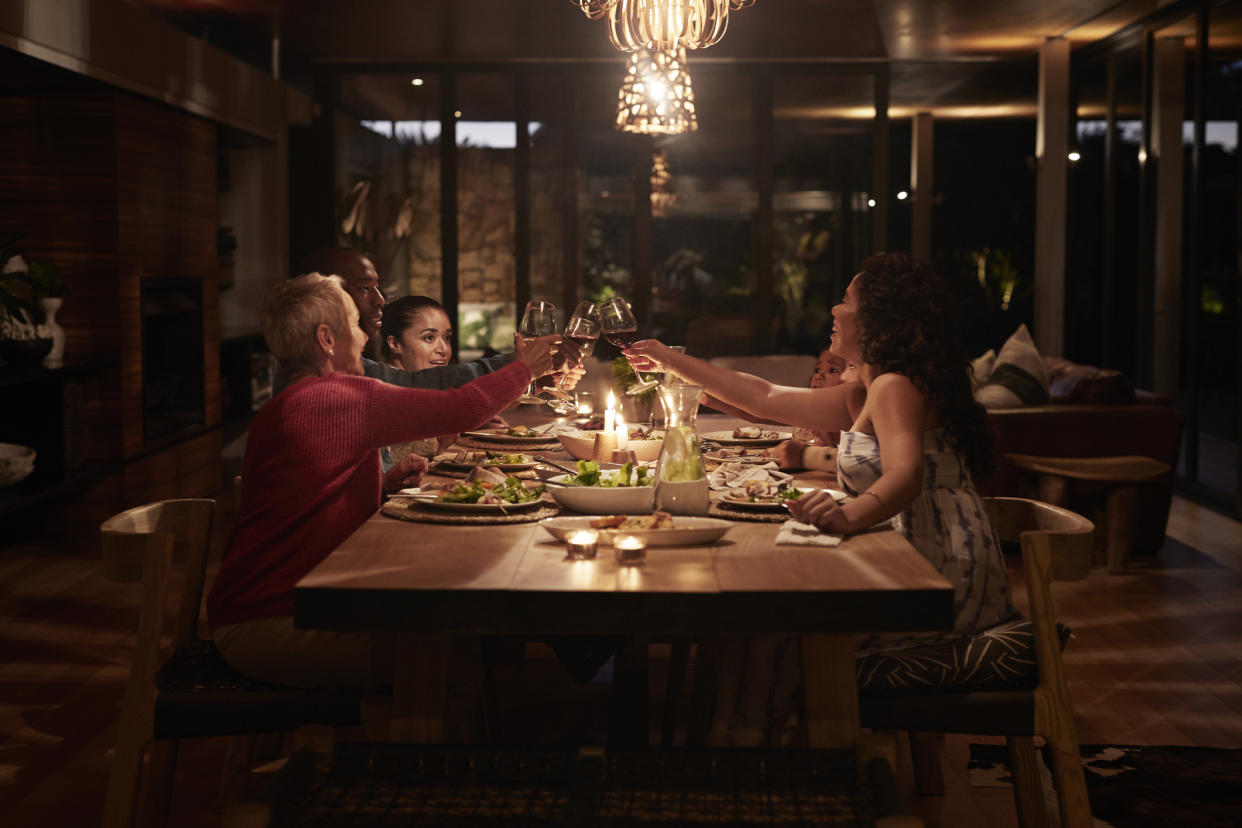Is There Any Safe Way to Socialize Inside This Winter?

Credit - Getty Images
but you’re breathing them for a shorter time, your risk is going to be lower,” she says. Miller says she’s invited friends over for 30-minute catch-up sessions, ideally wearing masks, to get in some socializing without spending too long together.
Are public places okay?
In most indoor establishments, you likely have little control over whether windows are open and how many people are inside; you also have no idea whether your fellow patrons have been exposed to the virus. But some public places are likely safer than others.
Dining or drinking inside means you’ll inevitably be around maskless people, which removes a layer of protection. (Speaking loudly over the din of others also leads people to expel more droplets and viral particles, studies have shown.) Sit-down restaurants where people mostly stay at their own tables are likely safer than bars, where people tend to mingle and may ignore public-health guidelines after they’ve had a few drinks, says Dr. Tom Hennessy, an infectious disease epidemiologist at the University of Alaska. In either case, try to pick places that have limited capacity, and avoid establishments that feel hot and stuffy or don’t have many windows—they probably don’t have good ventilation, Miller says.
Public places not meant for eating and drinking, like malls and museums, have some advantages over bars and restaurants, since everybody can remain masked the whole time they’re inside. They also tend to be much larger, allowing viral particles to disperse—especially if they’re operating at reduced capacity. “If you’re in a large room and the room is well-ventilated and there’s not too many people…then the risk [of aerosol transmission] is actually fairly small,” says Daniel Bonn, co-author of the new Physics of Fluids study and an engineering professor at the University of Amsterdam.
Bonn’s study found that aerosol transmission was most likely to occur in enclosed, poorly ventilated places. Very small spaces, like public elevators and bathrooms, were the riskiest, while larger, better-ventilated places, like office buildings, were fairly safe. Bars, restaurants and private homes are likely somewhere in between.
What about quarantine pods?
Some people have formed quarantine “pods” by picking a few close friends or family members to see indoors, while cutting out nearly all other in-person contact. This can be a good system, Thielen says, as long as you’re very clear about ground rules. “You have to know that the people within your pod are not having 10 other pods that they’re getting together with,” Thielen says.
There’s no exact threshold at which a pod gets too big, Hennessy says, but smaller is always better. Each person you add to the group increases the chances of someone having a risky encounter and exposing others. Before you start or expand your pod, it’s also a good idea for everyone to quarantine for a couple weeks and get tested to ensure nobody is unknowingly infected.
Can my kids see their friends?
Early in the pandemic, some studies suggested children are unlikely to catch and spread COVID-19, leading some parents to carry on with indoor playdates. While it’s true that kids are much less likely than adults to develop severe cases of coronavirus, they can and do catch and transmit the virus, as recent studies and case reports have shown. “There are certainly enough well-documented cases of kids transmitting that we should generally be exercising the same precautions as for older family members,” Thielen says.
“Even more than adults, kids are comfortable being outside,” Thielen adds. Take advantage of their resilience by setting up (short) outdoor playdates, even when the weather gets snowy.
Can I see family for the holidays?
Any indoor gathering is risky this year, no matter who you’re seeing or for what purpose. Even for holidays, small, masked gatherings are safest.
If you decide to have prolonged visits with relatives—particularly if they’re elderly or otherwise vulnerable—Hennessy recommends first getting tested, isolating for at least a week and then getting tested again to confirm the negative result. “One test isn’t enough, really,” he says.
The equation gets even more complicated if you have to travel to see family. Though airplanes do have good air filtration systems, Hennessy says it’s still risky to sit shoulder-to-shoulder with lots of other people, potentially for hours. For that reason, people traveling for the holidays should aim to get tested pre- and post-trip, ideally with about a week of isolation after getting off the plane or train. If the logistical headache of isolating for a week post-flight is too much, this may be a year to skip holiday travel, Hennessy says.


